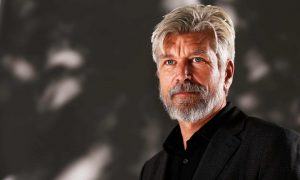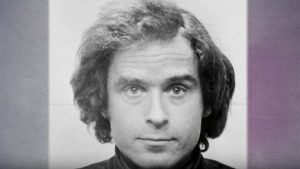Category: Archives
He Blinded Me with Science
Emily Ogden in Lapham’s Quarterly:
 In 1784, America’s soon-to-be second, third, and fourth presidents celebrated the publication of a report debunking the practices of Franz Anton Mesmer, a Vienna-educated physician whose name gives us the word mesmerizing. John Adams, Thomas Jefferson, and James Madisonall rejoiced to know that Mesmer would no longer impose on credulous Parisians with his invisible fluid of animal magnetism, a living or vital counterpart of mineral magnetism. Mesmer said that animal magnetism crackled all around us, though it was especially concentrated in human nerves. He claimed he could cure illnesses by manipulating this invisible fluid in the ailing body. His theory did not seem as implausible in 1784 as it does now; it crossed ancient humoral medicine with the best accounts then available of how electricity and magnetism worked. Mesmer had made a few false starts in Austria, including the time he promoted a theory of “animal gravitation,” before taking Paris by storm in 1778. While he called his practice animal magnetism, his opponents would coin, and his successors would eventually adopt, the term mesmerism.
In 1784, America’s soon-to-be second, third, and fourth presidents celebrated the publication of a report debunking the practices of Franz Anton Mesmer, a Vienna-educated physician whose name gives us the word mesmerizing. John Adams, Thomas Jefferson, and James Madisonall rejoiced to know that Mesmer would no longer impose on credulous Parisians with his invisible fluid of animal magnetism, a living or vital counterpart of mineral magnetism. Mesmer said that animal magnetism crackled all around us, though it was especially concentrated in human nerves. He claimed he could cure illnesses by manipulating this invisible fluid in the ailing body. His theory did not seem as implausible in 1784 as it does now; it crossed ancient humoral medicine with the best accounts then available of how electricity and magnetism worked. Mesmer had made a few false starts in Austria, including the time he promoted a theory of “animal gravitation,” before taking Paris by storm in 1778. While he called his practice animal magnetism, his opponents would coin, and his successors would eventually adopt, the term mesmerism.
Mesmer’s patients—most of them female and well-to-do—found him through word-of-mouth and in pamphlets advertising his metaphysical talents. They met in his richly appointed treatment salon, where they gathered around a bucket filled with shards of glass and water that concentrated the life-giving animal-magnetic fluid. Mesmer said all illnesses had the same cause: a blockage in the flow of animal magnetism.
More here.
Saturday Poem
The Problem of Describing Trees
The aspen glitters in the wind
And that delights us.
The leaf flutters, turning,
Because that motion in the heat of August
Protects its cells from drying out. Likewise the leaf
Of the cottonwood.
The gene pool threw up a wobbly stem
And the tree danced. No.
The tree capitalized.
No. There are limits to saying,
In language, what the tree did.
It is good sometimes for poetry to disenchant us.
Dance with me, dancer. Oh, I will.
Mountains, sky,
The aspen doing something in the wind.
.
by Robert Hass
from Time and Materials
publisher: Ecco, 2007
Friday, August 31, 2018
Lawrence Osborne is the new Raymond Chandler
Francesca Angelini in The Times:
 Lawrence Osborne’s death certificate hangs above his desk. “Tuberculosis, 2009,” he says with a laugh over the phone from Bangkok. It is the legacy of an article he wrote about men who fake their deaths for insurance payouts. It’s not hard to see why Raymond Chandler’s estate approached him to write a Philip Marlowe sequel: between writing assignments in seedy, dangerous places and a career spent drinking his way around Poland, Paris, Tuscany, California, New York, Mexico, Morocco, Istanbul and Bangkok, he is a match for Marlowe when it comes to dark and thrilling encounters.
Lawrence Osborne’s death certificate hangs above his desk. “Tuberculosis, 2009,” he says with a laugh over the phone from Bangkok. It is the legacy of an article he wrote about men who fake their deaths for insurance payouts. It’s not hard to see why Raymond Chandler’s estate approached him to write a Philip Marlowe sequel: between writing assignments in seedy, dangerous places and a career spent drinking his way around Poland, Paris, Tuscany, California, New York, Mexico, Morocco, Istanbul and Bangkok, he is a match for Marlowe when it comes to dark and thrilling encounters.
Yet his instinct was to say no. “You can never win with franchise books,” he says. “Even if you pull it off, fans are going to dump on you.” Osborne had idolised Chandler since he was young, but hadn’t forgotten how Robert B Parker was dismissed by Martin Amis in 1991 for turning Marlowe into “an affable goon”.
The story of the death certificate, though, had led Osborne to meet the model for Marlowe. “He was a retired private investigator living on the beach in a Thai village, making pizzas with a gun in his holster,” he recalls. “And I thought that if I based my Marlowe on him, and set the novel in a time and place I knew well, I could write something original, avoid pastiche.” He gave it a go. “It was like eating chocolate every day. And that’s not always the case when I’m writing, believe me. So, if people are going to piss on this, I don’t really care. I had fun with it.”
More here.
The End of Theoretical Physics As We Know It
Sabine Hossenfelder in Quanta:
 Theoretical physics has a reputation for being complicated. I beg to differ. That we are able to write down natural laws in mathematical form at all means that the laws we deal with are simple — much simpler than those of other scientific disciplines.
Theoretical physics has a reputation for being complicated. I beg to differ. That we are able to write down natural laws in mathematical form at all means that the laws we deal with are simple — much simpler than those of other scientific disciplines.
Unfortunately, actually solving those equations is often not so simple. For example, we have a perfectly fine theory that describes the elementary particles called quarks and gluons, but no one can calculate how they come together to make a proton. The equations just can’t be solved by any known methods. Similarly, a merger of black holes or even the flow of a mountain stream can be described in deceptively simple terms, but it’s hideously difficult to say what’s going to happen in any particular case.
Of course, we are relentlessly pushing the limits, searching for new mathematical strategies. But in recent years much of the pushing has come not from more sophisticated math but from more computing power.
When the first math software became available in the 1980s, it didn’t do much more than save someone a search through enormous printed lists of solved integrals. But once physicists had computers at their fingertips, they realized they no longer had to solve the integrals in the first place, they could just plot the solution.
More here.
A Culture of Knowingness: On Jordan Peterson’s Cultured Despisers
Andrew Gleeson at ABC:
 “Comically befuddled, pompous, and ignorant … half nonsense, half banality … the kind of tedious crackpot that one hopes not to get seated next to on a train.”
“Comically befuddled, pompous, and ignorant … half nonsense, half banality … the kind of tedious crackpot that one hopes not to get seated next to on a train.”
An “idiot du jour” and a “professor of piffle.”
Oh yes, and did I forget to mention – a fascist.
No, these are not descriptions of Donald Trump or even David Irving. They are actual quotations from intelligent and sophisticated people about Jordan Peterson, the Canadian psychologist, YouTube broadcaster, best-selling author (of Twelve Rules for Life) and Bible expositor – and no more introduction than that should be needed for readers of a website like this, or indeed anyone not living in a dungeon for the last year or so.
The extremity and dishonesty of the language used about Peterson by some people would make Joseph Goebbels blanch.
More here.
Yuval Noah Harari: Why Fascism is so tempting — and how your data could power it
Ernest Hemingway and His Last Muse
Nicholas Shakespeare at The Spectator:
 One rainy evening in December 1948, a blue Buick emerged from the darkness of the Venetian lagoon near the village of Latisana and picked up an Italian girl — 18, jet black wet hair, slender legs — who had been waiting for hours at the crossroads. In the car, on his way to a duck shoot, was Ernest Hemingway — round puffy face, protruding stomach and, at 49, without having published a novel in a decade, somewhat past his sell-by. He apologised for being late, and offered the rain-sodden girl a shot of whisky which, being teetotal, she refused.
One rainy evening in December 1948, a blue Buick emerged from the darkness of the Venetian lagoon near the village of Latisana and picked up an Italian girl — 18, jet black wet hair, slender legs — who had been waiting for hours at the crossroads. In the car, on his way to a duck shoot, was Ernest Hemingway — round puffy face, protruding stomach and, at 49, without having published a novel in a decade, somewhat past his sell-by. He apologised for being late, and offered the rain-sodden girl a shot of whisky which, being teetotal, she refused.
So did Papa, that ‘beat-up, old-looking bastard’, encounter the siren he called ‘my last and true love’: Adriana Ivancich, a mingling of Lolita and Tadzio, who appeared to him ‘as fresh as a young pine tree in the snow of the mountains’ and who went on to serve as Hemingway’s regenerative muse for his remaining 12 years. ‘It was just something that struck me like lightning.’
more here.
The Latest Vatican Crisis Is About Power
Rachel Donadio at The Atlantic:

In addition to highlighting intrigue at the Vatican, the letter also exposes deep fault lines inside the Catholic hierarchy in the United States—what Ross Douthat in the Times has called “the Catholic civil war.” Viganò writes that Francis told him “the bishops in the United States must not be ideologized, they must not be right-wing.” This is another key passage. While the U.S. Catholic hierarchy has few significant differences of opinion on doctrine, there are differences of tone and approach. Francis is more pastoral and less disciplinarian, and certainly less interested in the Church being on the front lines of culture wars over issues such as abortion and birth control. Others in the U.S. hierarchy—let’s call them the “Fox News bishops”—want the Church to be in the thick of the debate. Many traditionalist Catholics find Francis too liberal, too interested in social justice. As the ambassador in Washington, Viganò had pushed at the Vatican for the appointments of more combative bishops in the United States. After the Viganò letter appeared, some U.S. bishops came out in defense of Francis, and others decidedly did not. (Cardinal Raymond L. Burke, a traditionalist known for his penchant for wearing a vestment with a long red flowing train, said Viganò’s calls for Francis’ resignation were “licit.”)
more here.
An Enthusiastic Compendium of Female Intellectuals
Kristen Roupenian at the TLS:
 It feels as if the women on Dean’s list do have something important in common, but the precise nature of that something is surprisingly hard to pin down. They could not all be described, for one thing, as feminists: Sontag “roared” at Adrienne Rich about the “simple-mindedness” of feminism, having previously defended it, and Ephron felt “uneasy” about organized feminist efforts at the Democratic convention in 1972. Likewise, only some of these writers – Sontag and Arendt – were capital-I Intellectuals. Kael was a movie critic. McCarthy and Hurston were best known for their fiction. Adler is most famous for her reportage. The famously witty Nora Ephron, meanwhile, in addition to writing the screenplay for When Harry Met Sally and the gut-busting novel Heartburn, once wrote one hell of a parody of Ayn Rand:
It feels as if the women on Dean’s list do have something important in common, but the precise nature of that something is surprisingly hard to pin down. They could not all be described, for one thing, as feminists: Sontag “roared” at Adrienne Rich about the “simple-mindedness” of feminism, having previously defended it, and Ephron felt “uneasy” about organized feminist efforts at the Democratic convention in 1972. Likewise, only some of these writers – Sontag and Arendt – were capital-I Intellectuals. Kael was a movie critic. McCarthy and Hurston were best known for their fiction. Adler is most famous for her reportage. The famously witty Nora Ephron, meanwhile, in addition to writing the screenplay for When Harry Met Sally and the gut-busting novel Heartburn, once wrote one hell of a parody of Ayn Rand:
Twenty-five years ago, Howard Roark laughed. Standing naked at the edge of a cliff, his face painted, his hair the colour of a bright orange rind, his body a composition of straight, clean lines and angles, each curve breaking into smooth, clean planes, Howard Roark laughed.
more here.
If we want to help alcoholics, we must swallow an awkward fact
Aveek Bhattacharya in New Statesman:
 In late 2009, representatives of the alcohol industry were summoned to parliament to give evidence to a health committee inquiry into the government’s alcohol strategy. On four separate occasions, the committee returned to the same question: how would the alcohol industry’s sales be affected if people were to abide by the government’s drinking guidelines? They did not receive a direct response, but Asda’s corporate affairs director claimed that: “We would not encourage people to drink more than the recommended number of units per week”. The chief marketing officer of the multi-national drinks producer, Diageo, insisted that “we want a society where everybody drinks responsibly”. The chairman of the industry-funded Drinkaware Trust maintained that getting drinkers to keep to the guidelines would be “a major accomplishment and a real market success”.
In late 2009, representatives of the alcohol industry were summoned to parliament to give evidence to a health committee inquiry into the government’s alcohol strategy. On four separate occasions, the committee returned to the same question: how would the alcohol industry’s sales be affected if people were to abide by the government’s drinking guidelines? They did not receive a direct response, but Asda’s corporate affairs director claimed that: “We would not encourage people to drink more than the recommended number of units per week”. The chief marketing officer of the multi-national drinks producer, Diageo, insisted that “we want a society where everybody drinks responsibly”. The chairman of the industry-funded Drinkaware Trust maintained that getting drinkers to keep to the guidelines would be “a major accomplishment and a real market success”.
In actual fact, the alcohol industry is highly dependent on heavy drinking. New research shows that two-thirds of alcohol sales revenue in England comes from people drinking above the low-risk guideline levels of 14 units a week (approximately six pints of beer or one and a half bottles of wine). Moreover, almost a quarter of industry turnover comes from the 4 per cent of the population drinking at levels defined by the government as harmful (over 50 units per week for men, or 35 for women).
More here.
How to plant a trillion trees
Rachel Cernansky in Nature:
 When the Philippines opened its first school of forestry in 1910, the institute’s leaders hatched a plan to restore degraded woodlands surrounding the campus outside Manila. They planted dozens of tree varieties, both native and exotic. In 1913, the school received 1,012 mahogany (Swietenia macrophylla) seeds from a botanical garden in Calcutta, India, and started growing them around the grounds. The American hardwood became such a staple of reforestation efforts in the country that it spread throughout natural areas, so much so that it eventually proved a nuisance. The trees create veritable green deserts: their tannin-rich leaves are unpalatable to local animals and seem to stifle the growth of other plants where they fall. They also produce seeds annually, giving them an advantage over native hardwoods, which do so at intervals of five years or more.
When the Philippines opened its first school of forestry in 1910, the institute’s leaders hatched a plan to restore degraded woodlands surrounding the campus outside Manila. They planted dozens of tree varieties, both native and exotic. In 1913, the school received 1,012 mahogany (Swietenia macrophylla) seeds from a botanical garden in Calcutta, India, and started growing them around the grounds. The American hardwood became such a staple of reforestation efforts in the country that it spread throughout natural areas, so much so that it eventually proved a nuisance. The trees create veritable green deserts: their tannin-rich leaves are unpalatable to local animals and seem to stifle the growth of other plants where they fall. They also produce seeds annually, giving them an advantage over native hardwoods, which do so at intervals of five years or more.
It’s hardly history’s only forestry folly. “The whole notion of what species should be used in restoration tends not to receive, I would say, adequate attention,” says Douglas McGuire, coordinator of the Forest and Landscape Restoration Mechanism at the Food and Agriculture Organization of the United Nations in Rome. Many projects fail because they choose the wrong trees, use too few species or are not managed for the long term. Foresters and ecologists are realizing that for restoration efforts to succeed, they need to think more broadly — about matching trees to their location, about the effects on nearby insects and other animals and about relationships with soil and the changing climate. In other words: the ecosystem. Scientists are now testing and comparing strategies that range from letting nature take its course, to forest-management approaches that look a lot like farming. There is no one-size-fits-all solution, but the work exposes some philosophical friction. Ecologists seeking to increase biodiversity might champion a broad range of species, whereas sustainable-development advocates could back exotic fruit-bearing trees that benefit local people. And researchers seeking to mitigate climate change might push for a single fast-growing variety.
More here.
Friday Poem
Mud Drawing #15. Abdullah, the Village Boy with One Eye
No village.
No mother. No father. One brother. One sister. No food. No water. No
cows. No camels. No trees. No village. No food no water. No cows no
camels no trees. No father no. Mother. No. One brother. One sister no
water. No. One brother no water no father. No camel no cow no village no.
No trees. No trees. No trees. No village no father. No mother no mother
no mother. No water. No water. No. No village one sister. No mother. No
water. One sister. One sister. One sister. No village. One sister. No village no trees
no trees no father no. No mother. No camels no camels no village
no trees no trees. No trees. One sister. One. Sister. One. No. Father. No
father no food no food no food. No mother no mother. Onesister. No
village no village no village. No village no village no village no village no
trees.
by Juan Felipe Herrera
~~~~~~~~~~~~~~~~~~~~~~~
Recommendation: Read it aloud at a moderate pace
obeying every period.
Thursday, August 30, 2018
“The End” by Karl Ove Knausgaard: the final part of his six-volume autobiographical novel
Alex Clark in The Guardian:
 There is, by now, no separating the Norwegian writer Karl Ove Knausgaard’s six-volume autobiographical novel My Struggle from all that has surrounded it: the repercussions within his own family, most notably prompted by his account of his father’s alcoholism and death, and by his second wife’s breakdown; by the title of the series itself, an overt appropriation of Adolf Hitler’s Mein Kampf; and by the unprecedented spread of the books through countries and translations, far outstripping that of other contemporary Norwegian writers.
There is, by now, no separating the Norwegian writer Karl Ove Knausgaard’s six-volume autobiographical novel My Struggle from all that has surrounded it: the repercussions within his own family, most notably prompted by his account of his father’s alcoholism and death, and by his second wife’s breakdown; by the title of the series itself, an overt appropriation of Adolf Hitler’s Mein Kampf; and by the unprecedented spread of the books through countries and translations, far outstripping that of other contemporary Norwegian writers.
In the UK, where the first volume appeared in 2012 and its subsequent episodes in annual instalments, there has been a strange anticipatory tension derived from knowing that all the material was there, merely waiting to be put in a language we could understand; all six volumes of Min Kamp were published in Norwegian between 2009 and 2011, Knausgaard’s extraordinary writing speed adding to the mystique surrounding the project. It has been the reverse, in a sense, of the anxiety of viewers waiting for the next tranche of TV’s Game of Thrones, where the rushed writing of epsiodes has felt more like a cartoonish laying of tracks before a hurtling locomotive.
Such is Knausgaard’s literary celebrity that even a recent piece he wrote for the New Yorker about the negative effects of dog-owning on his creativity comes under scrutiny. Indignant dog-loving writers and fans of dog-loving writers immediately mobilised.
More here.
Akshay Venkatesh has won a Fields Medal for his “profound contributions to an exceptionally broad range of subjects in mathematics”
Erica Klarreich in Quanta:
 At the playground on the leafy campus of the Institute for Advanced Study in Princeton, New Jersey, one afternoon in May, the mathematician Akshay Venkatesh alternated between pushing his 4-year-old daughter on the swing and musing on the genius myth in mathematics. The genius stereotype does the discipline no favors, he told Quanta. “I think it doesn’t capture all the different kinds of ways people contribute to mathematics.”
At the playground on the leafy campus of the Institute for Advanced Study in Princeton, New Jersey, one afternoon in May, the mathematician Akshay Venkatesh alternated between pushing his 4-year-old daughter on the swing and musing on the genius myth in mathematics. The genius stereotype does the discipline no favors, he told Quanta. “I think it doesn’t capture all the different kinds of ways people contribute to mathematics.”
Venkatesh’s other daughter, 7, wandered somewhere with her friends on the serene grounds of the institute’s visitor housing complex, which lends itself to the kind of free-range childhood that has become rare these days. Venkatesh had been visiting IAS for the past year, on leave from Stanford University; as of mid-August he will join the institute’s permanent faculty, whose previous members include Albert Einstein, Kurt Gödel and quite a few winners of the Fields Medal, the highest honor in mathematics.
More here.
More on the Coddling of the American Mind
Thomas Chatterton Williams in the New York Times:
 Earlier this summer, a white poet named Anders Carlson-Wee published “How-To,” in The Nation. It’s a brief verse riffing on the various performances many homeless people must undertake in order to render themselves visible to passers-by. “If you got hiv, say aids,” Carlson-Wee wrote. “If you a girl, say you’re pregnant — nobody gonna lower themselves to listen for the kick. People passing fast.” Corny, perhaps, but it’s hard not to see this as an exercise, however forced or clumsy, in empathy. A few weeks later, The Nation appended a lengthy editor’s note — longer than the work itself — to the original post, stating that the poem “contains disparaging and ableist language that has given offense and caused harm to members of several communities.” One particularly offending line read: “If you’re crippled don’t flaunt it. Let em think they’re good enough Christians to notice.” Carlson-Wee apologized, too, acknowledging on Twitter that the criticism had been “eye-opening.” The first reply to this tweet of contrition was a seemingly serious further rebuke: The phrase “eye-opening” was dismissive of the visually impaired.
Earlier this summer, a white poet named Anders Carlson-Wee published “How-To,” in The Nation. It’s a brief verse riffing on the various performances many homeless people must undertake in order to render themselves visible to passers-by. “If you got hiv, say aids,” Carlson-Wee wrote. “If you a girl, say you’re pregnant — nobody gonna lower themselves to listen for the kick. People passing fast.” Corny, perhaps, but it’s hard not to see this as an exercise, however forced or clumsy, in empathy. A few weeks later, The Nation appended a lengthy editor’s note — longer than the work itself — to the original post, stating that the poem “contains disparaging and ableist language that has given offense and caused harm to members of several communities.” One particularly offending line read: “If you’re crippled don’t flaunt it. Let em think they’re good enough Christians to notice.” Carlson-Wee apologized, too, acknowledging on Twitter that the criticism had been “eye-opening.” The first reply to this tweet of contrition was a seemingly serious further rebuke: The phrase “eye-opening” was dismissive of the visually impaired.
If it feels as though we no longer know how to speak or listen in good faith to one another, it’s because we don’t. This is the kind of controversy that might have seemed overblown as recently as the start of the Obama administration. Today it arrives with frequency and fervor — a marker of the country’s rapidly shifting mores, which are the product of new generations increasingly fluent in, in thrall to and in fear of the hyperspecialized language and norms of academia.
More here.
Nobel Laureate Sydney Brenner on John von Neumann and the history of DNA and self-replication
Conjuring Anthropology’s Future
Simon During at Public Books:
 But first things first. Magic’s Reason is based on a brilliant aperçu. Why shouldn’t anthropology come to terms with today’s secular magic? Or, to put that a little more carefully: given that anthropology has to a significant degree been constituted on an opposition between, on the one side, “modern rationality,” and, on the other, so-called “primitive magic” (as articulated by the discipline’s founders, and by E. B. Tylor [1832–1917] in particular), what might an ethnography of contemporary stage magicians and their understanding and practices of magic have to tell us about the discipline’s conceptual and ideological underpinnings?
But first things first. Magic’s Reason is based on a brilliant aperçu. Why shouldn’t anthropology come to terms with today’s secular magic? Or, to put that a little more carefully: given that anthropology has to a significant degree been constituted on an opposition between, on the one side, “modern rationality,” and, on the other, so-called “primitive magic” (as articulated by the discipline’s founders, and by E. B. Tylor [1832–1917] in particular), what might an ethnography of contemporary stage magicians and their understanding and practices of magic have to tell us about the discipline’s conceptual and ideological underpinnings?
Jones pursues his inquiry into relations between modern secular magic and anthropology’s historical conceptualization of primitive magic from a position that is, first, Boasian, and, second, Latourian.
more here.
Ted Bundy and the Myth of the Psychopath
Sarah Marshall at The Believer:
 When Ted Bundy was apprehended in Pensacola in the early hours of February 15, 1978, six weeks after he escaped from a Colorado jail, the FBI had already publicly linked him to thirty-six murders across five states. In the ensuing decade, both the random speculations of onlookers and the educated guesses of law enforcement often pushed the number far higher. Many said it had to be a hundred or more, and cited Bundy’s own enigmatic statement to the Pensacola detectives who had questioned him about the FBI’s claim. “He said the figure probably would be more correct in the three digits,” Deputy Sheriff Jack Poitinger said.
When Ted Bundy was apprehended in Pensacola in the early hours of February 15, 1978, six weeks after he escaped from a Colorado jail, the FBI had already publicly linked him to thirty-six murders across five states. In the ensuing decade, both the random speculations of onlookers and the educated guesses of law enforcement often pushed the number far higher. Many said it had to be a hundred or more, and cited Bundy’s own enigmatic statement to the Pensacola detectives who had questioned him about the FBI’s claim. “He said the figure probably would be more correct in the three digits,” Deputy Sheriff Jack Poitinger said.
Ron Holmes, a criminal justice professor who interviewed Bundy on two occasions, claimed that the total was 365, and that Bundy had raped and killed his first victim at the age of eleven. “Ted Bundy is not insane,” Holmes told the press. “Ted Bundy knows the difference between right and wrong. But Ted Bundy does what he wants to do when he wants to do it.”
more here.
Looking Back at the 1968 Democratic Convention
Walter Nicklin at the American Scholar:
 Amid all the hot, languid days of late August, melting together into a lifetime’s haze of forgotten moments, what happened exactly a half-century ago will never fade: I’m tightly holding the hand of a girl I’ve only just met, fleeing the searing sensation of tear gas, coughing and wheezing, caught up in the crowd stampeding out of Grant Park down Michigan Avenue.
Amid all the hot, languid days of late August, melting together into a lifetime’s haze of forgotten moments, what happened exactly a half-century ago will never fade: I’m tightly holding the hand of a girl I’ve only just met, fleeing the searing sensation of tear gas, coughing and wheezing, caught up in the crowd stampeding out of Grant Park down Michigan Avenue.
You didn’t have to be there, as I was—at the 1968 Democratic Convention, August 26-29, in Chicago—to feel the exhilarating terror of the tear gas or the billy-club-wielding policemen. “The whole world is watching,” chanted the protesters, playing for the television cameras. And you didn’t have to be among the demonstrators to anticipate what would become the enduring meaning of “Chicago 1968”—a generational imprint, a Baby Boomer synecdoche, shorthand for the volatile mix of Vietnam War dissent, police overreaction, the media’s power, and the young-versus-old divide that superseded national identity.
more here.
